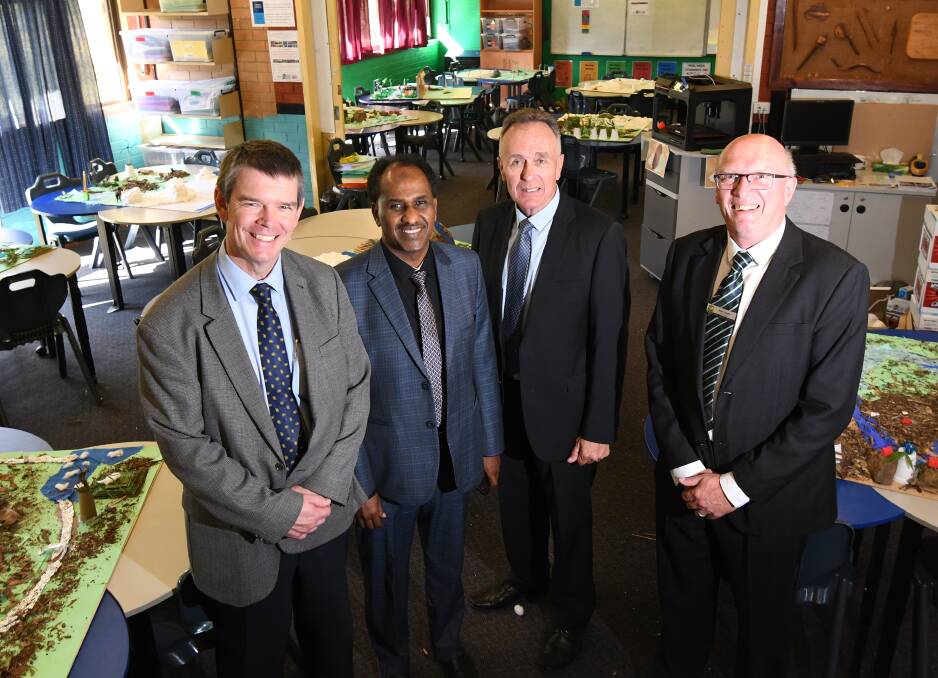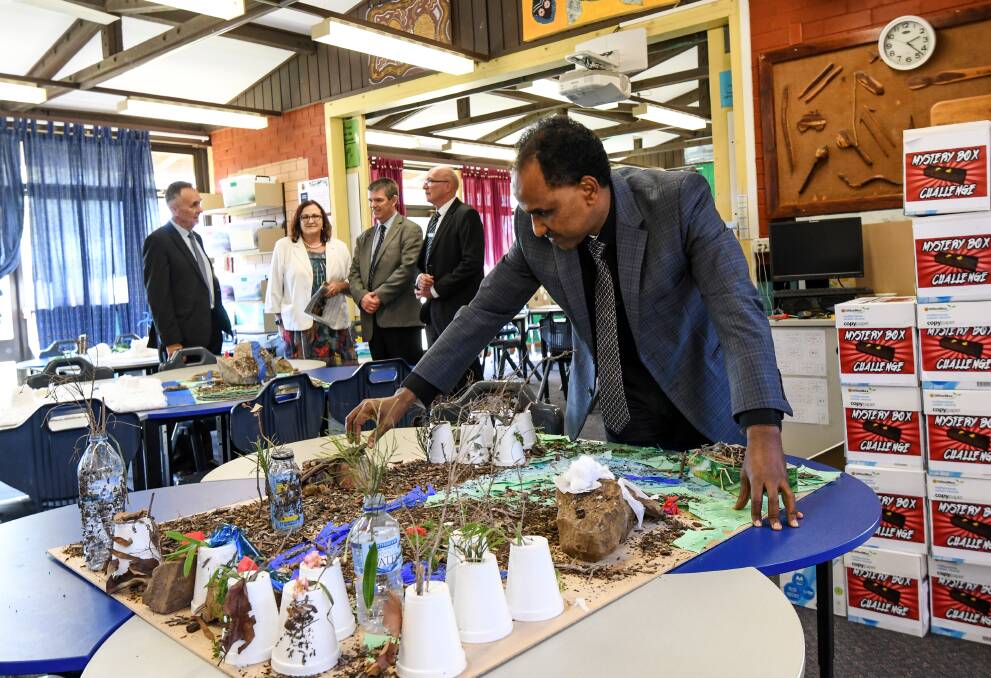
Peel High just might be on the cutting edge of a new era of education, as the Department’s top brass flew in to give the school’s new program the nod of approval.
Subscribe now for unlimited access.
$0/
(min cost $0)
or signup to continue reading
Late last year the school was selected as one of thirty in the state to trial the School’s of The Future program, which has seen classrooms break from traditional learning and teaching methods.
The program, which is being trialed on year seven, sees three teachers simultaneously teaching 60 students in a flexible “student focussed project-based learning environment.”
On Wednesday principal and program instigator Rod Jones was joined by the Department of Education Executive Directors Mark Grant and Frank Potter, as well as High Performance Director Ahmed Deria, and Tamworth Director Ruythe Dufty, who took a look at how the classrooms operated.
Related reading:
“The engagement that I saw in that classroom is completely different to a traditional classroom,” Mr Grant said.
“I have never seen the program in operation before, but having three teachers with individual areas of expertise blended together into this integrated model is very impressive.
“If this is the example, and the data supports it, it is going to be a really brave person who doesn’t see it as something to scale up across the board.”

Last week a list of recommendations were produced by the Gonski Panel, the number one being that Australia had to “modernise our lagging education system and focus on individual student outcomes, rather than the progressive hurdles of age and year based outcomes.”
By combining students of a range of different levels, and individualising their goals and outcomes, that is exactly what the Schools of The Future Program hopes to do, although it does come at a financial cost compared to traditional classrooms.
“From a department point of view, in order to meet those (Gonski) objectives we need to learn from the schools that are innovating so we can deliver on that remit from Gonski,” Mr Grant said.
One of the key premises behind the program is the ability for the three teachers to collaborate and plan as a unit, targeting the students interests and needs to increase engagement.
As Executive Director of School Performance Mr Potter was instantly convinced of the programs potential.
“I think what we have seen here today is a perfect example of student centred learning, and the enthusiasm of the staff and the relationship they have with the kids is key to that,” he said.
“The kids are interested, they are doing things that they can see the purpose of, and they are learning as they do it.”
While Peel High is just one example of where innovative programs are reporting early success, the Department does not plan on rolling out the same program across all schools, instead hoping that individual schools can learn from these initial roll-outs, and then tailor their own individual programs to meet needs and budgetary requirements.
“Schools are starting to see the benefit of where innovation is happening,” Mr Potter said.
“It won’t all be the same, but it will be similar in concept, that is how do we better engage kids, how do we present our material in a more realistic way so that outcomes improve.”

